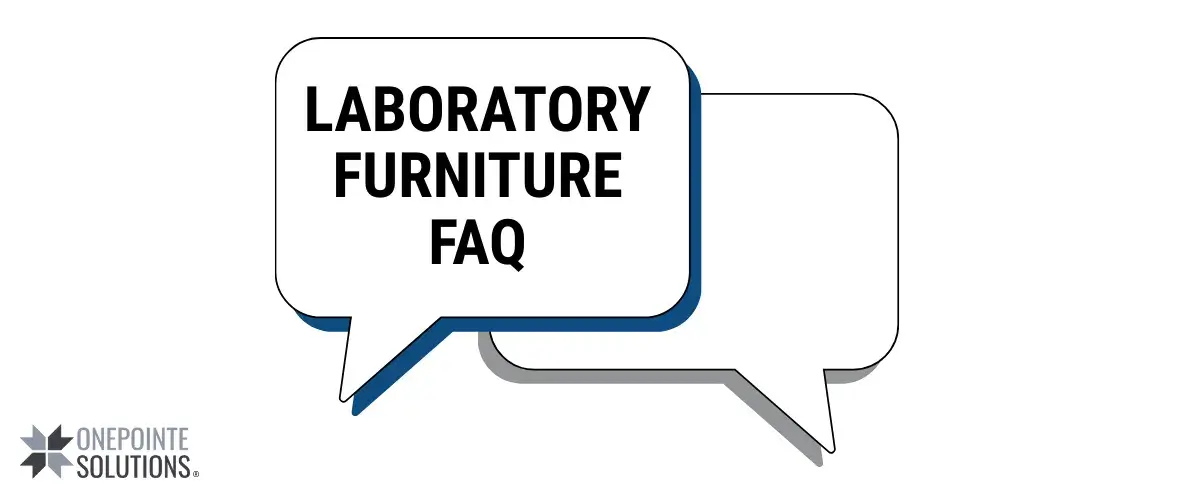

General Questions - Lab Furniture FAQ
If you’re trying to get a better understanding of laboratory furniture, you probably have some unmet questions. Whether you’re a researcher, architect or contractor, in this guide we will answer the most common inquiries about lab tables, countertops, lab design, casework & cabinets and more to help you give you confidence when it comes to your laboratory.
Laboratory Casework & Cabinets
Q: What is the Standard Laboratory Casework Depths; Heights; and Widths?
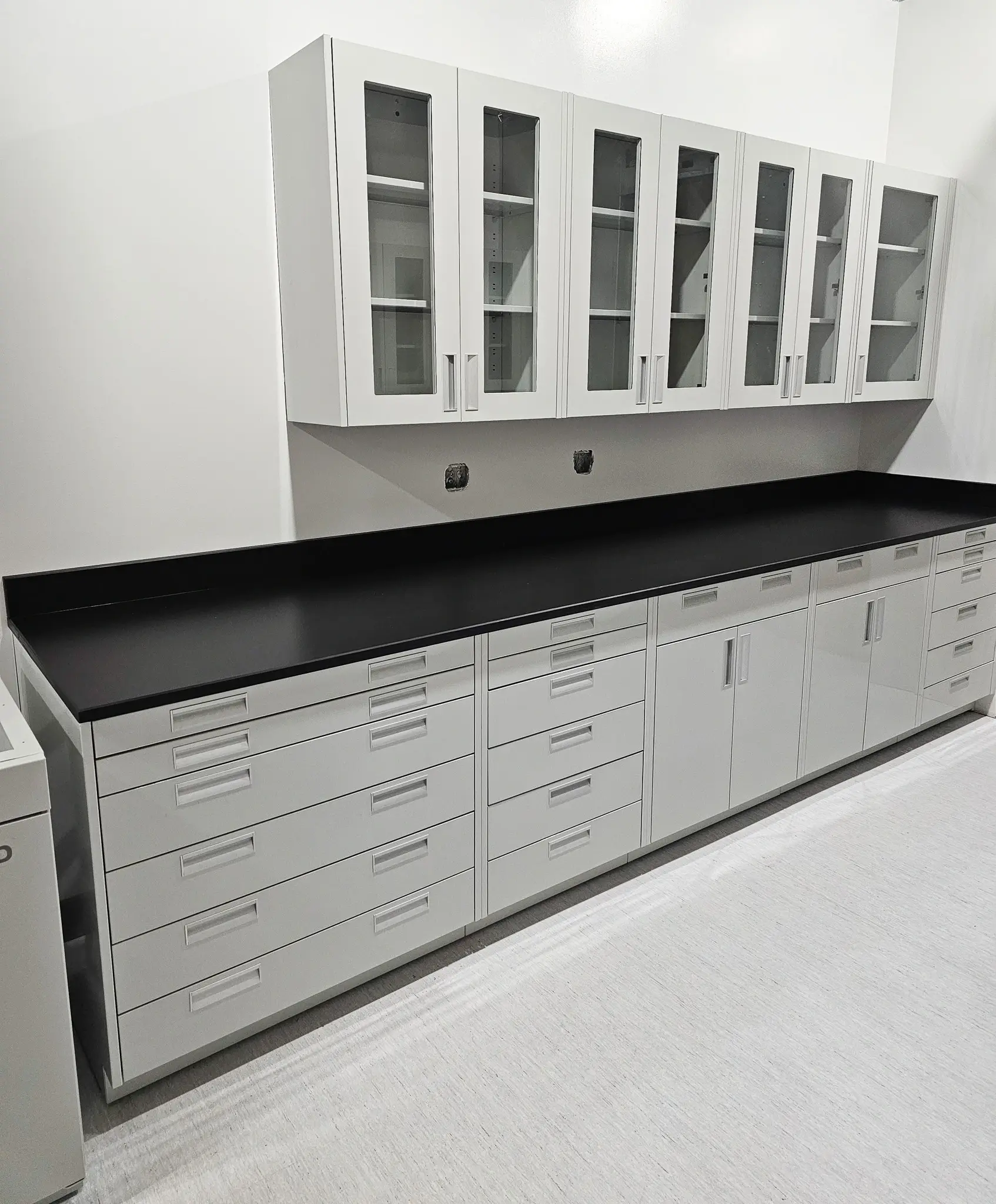
For laboratory casework, heights, widths and depths can vary based on the cabinet type (ie. base, sink, wall or tall cabinets, etc.), but to keep it simple, aim for these dimensions as the best rule of thumb:
For Base & Sink Lab Cabinets
- Heights 29″, 32″, 35″ of 41″
- Widths: 12″- 24″ in 6″ increments (single door options) or 30″ – 48″in 6″ increments (2 door options). Sink Cabinets can also go up to 52″ and 58″.
- Depths: 18″, 22″
Wall Lab Cabinets
- Heights: 18″, 24″, 30″, 36″, 42″, 36″
- Widths 12″-48″ in 6″ increments
- Depths: 13″, 16″
Tall Lab Cabinets:
- Heights: 84″
- Widths: 12″-48″ in 6″ increments
- Depths: 13″, 16″, 18″, 22″
For more details on laboratory casework sizes, check out our lab casework catalog
Q: What Type of Cabinets are Vented Beneath Fume Hoods?
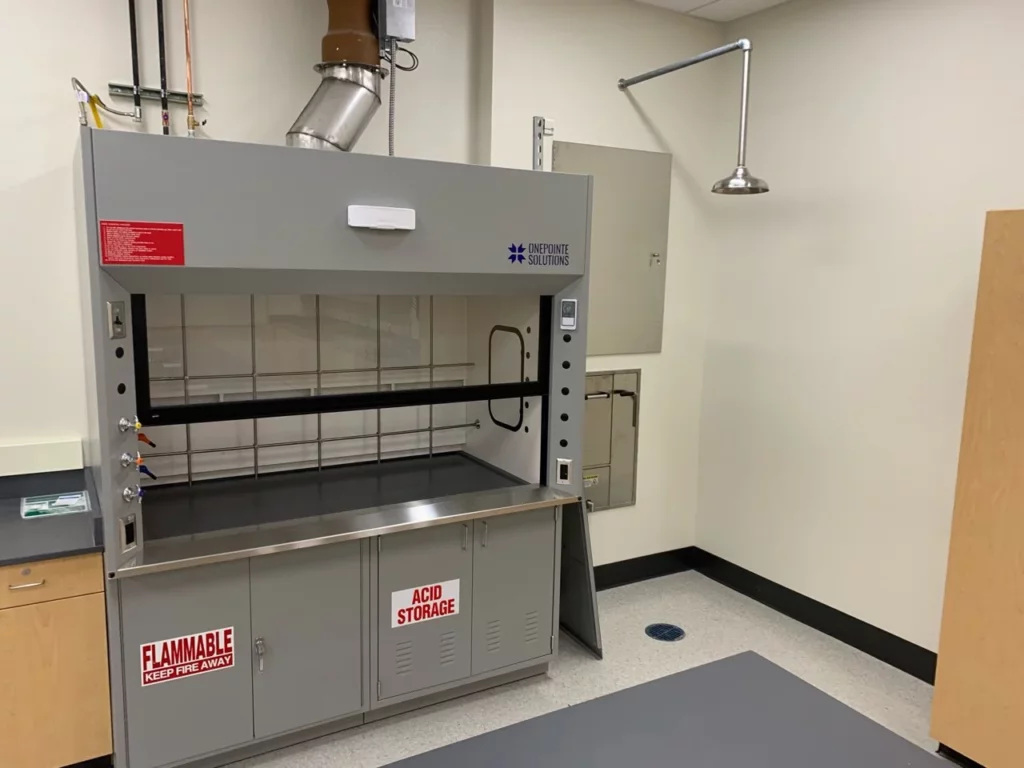
These cabinets are known as acid and flammable cabinets.
Acid and flammable cabinets are a great option to store hazardous materials in a safe location. Also with them being conveniently placed under the hood, it reduces risk of accidents in case you have to travel across the lab to retrieve those substances.
Our acid and flammable cabinets doors are sealed with a fiberglass roped gasket to ensure there is no escape of fumes or gaseous chemicals. Additionally,, our flammable cabinets come with hydraulic-actuated self-closing doors to ensure doors are no accidentally left open to prevent flammable gaseous fumes from escaping.
Laboratory Design
Q: What is the Best Design for Quality Control Lab?
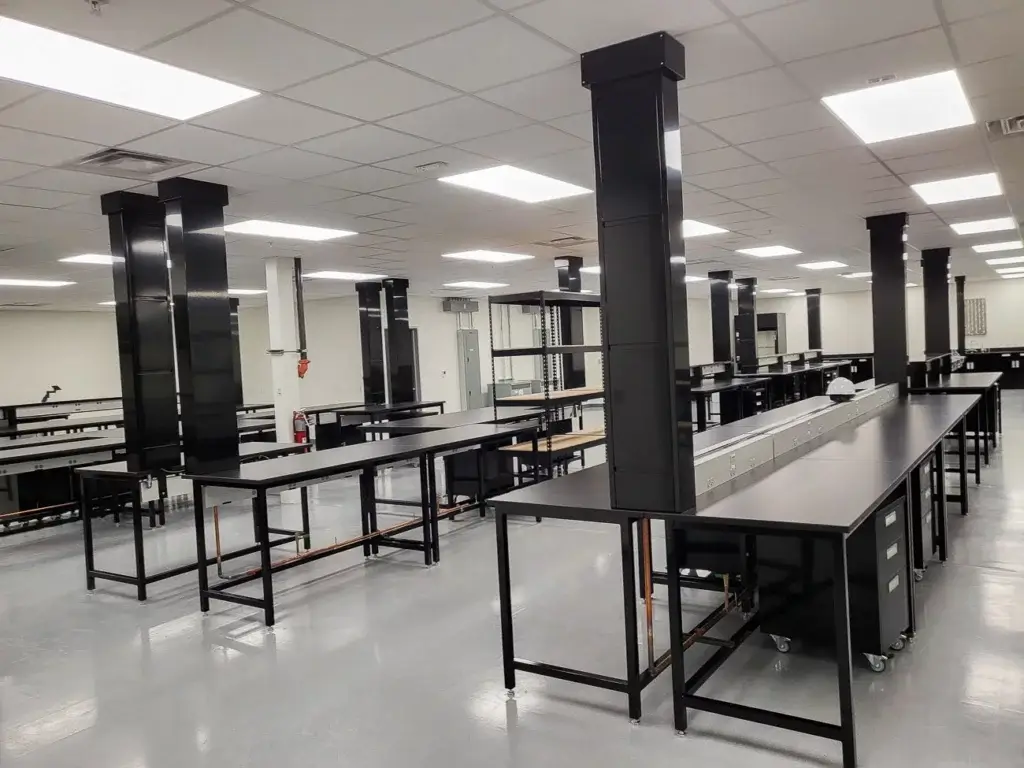
Designs for laboratories will always vary based on space, what’s needed, processes safety considerations, etc. However, it’s good to have internal and external quality measures in place, consistent standard operating procedures, and establishing specific analytic laboratory settings. At the end of the day, quality control in a laboratory is to make it safer for employees, reduce wasted time, limit injuries, and legal troubles. To learn more about why quality control in a lab is important, check out our blog, The Importance of Quality Control in Laboratories, along with quality assurance.
And for our we can help when it comes to your laboratory design, visit our lab design page.
Laboratory Tables, Workbenches & Workstations
Q: What are Science Lab Table Tops Made of?
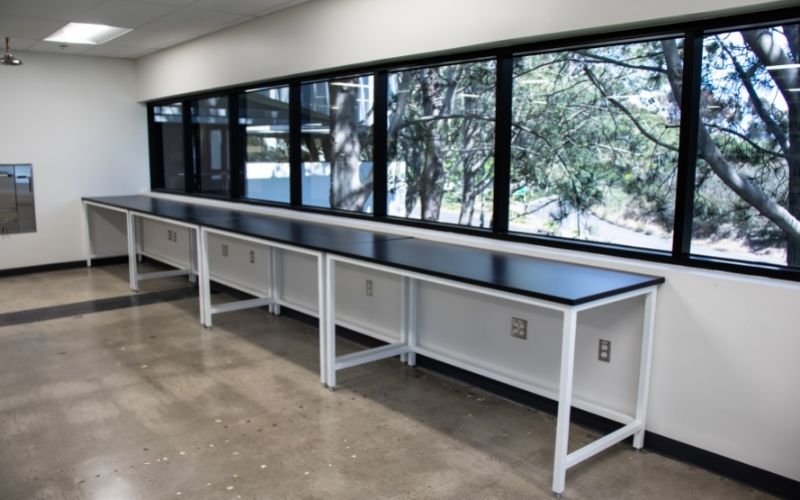
That will vary be based on the type of top material but there are several kinds of science tabletops:
- Epoxy Resin: Most common, smooth and color-through material that is heavily chemical resistant.
- Phenolic Resin: Scratch and moisture resistant, durable, non-porous, great for water treatment plants, hospitals, schools and a cost-effective option compared to epoxy.
- Stainless Steel: Corrosion resistant, anti-bacterial, best for sterile environments, clean rooms, biosafety labs, hospitals.
- Solicor-CR: Chemical resistant, non-porous, scratch & impact resistant, not as common in lab spaces.
Q: Are Adjustable-Height Lab Tables Available?
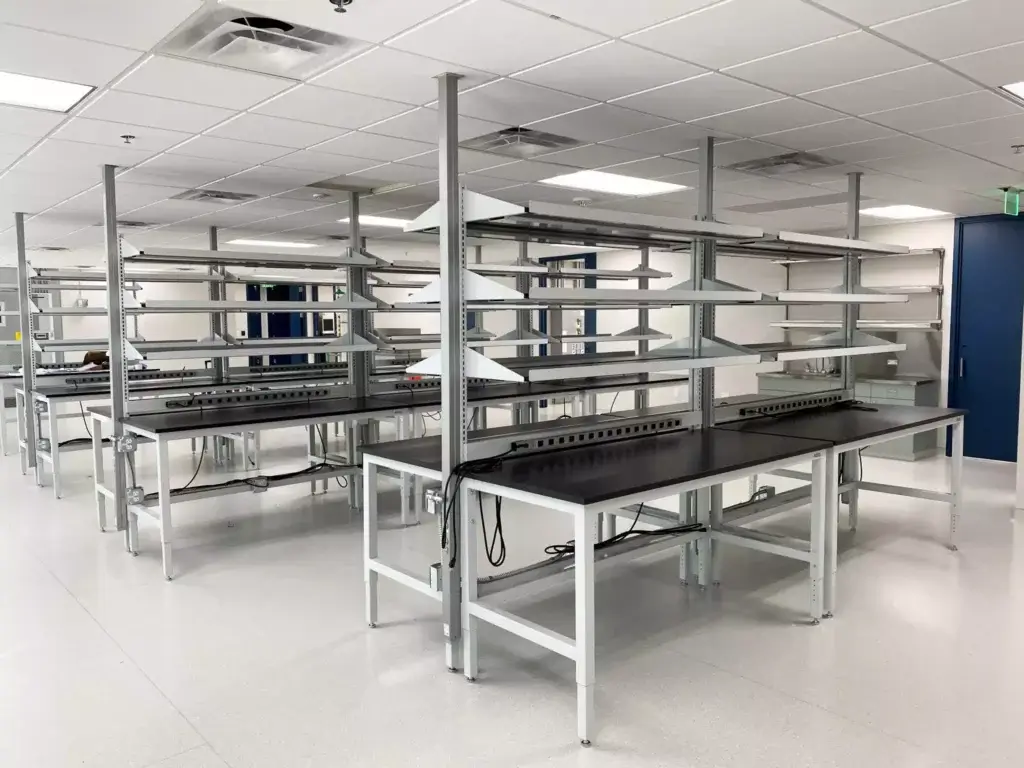
Yes, there are (3) options to choose to when it comes to height adjustability for laboratory tables
- Electric-Hydro
- Hand-Crank
- Manual
- To learn more about adjustability options, view our lab table catalog on page 38 to view leg options – OPSMFG-Lab-Table-Catalog.pdf
Q: What are Some Laboratory Table Dimensions?
Laboratory tables can come in several dimensions but generally speaking below are heights, widths (or lengths) and depths that laboratory benches and workstations fall within:
Heights: 30″ -42″ in 1″ increments
Widths: 30″-96″ in 6″ increments
Depths: 30″-36″ in 1″ increments
However, custom sizes are available as well. Contact us today to discuss your custom design.
Q: What are the Different Types of Lab Tables?
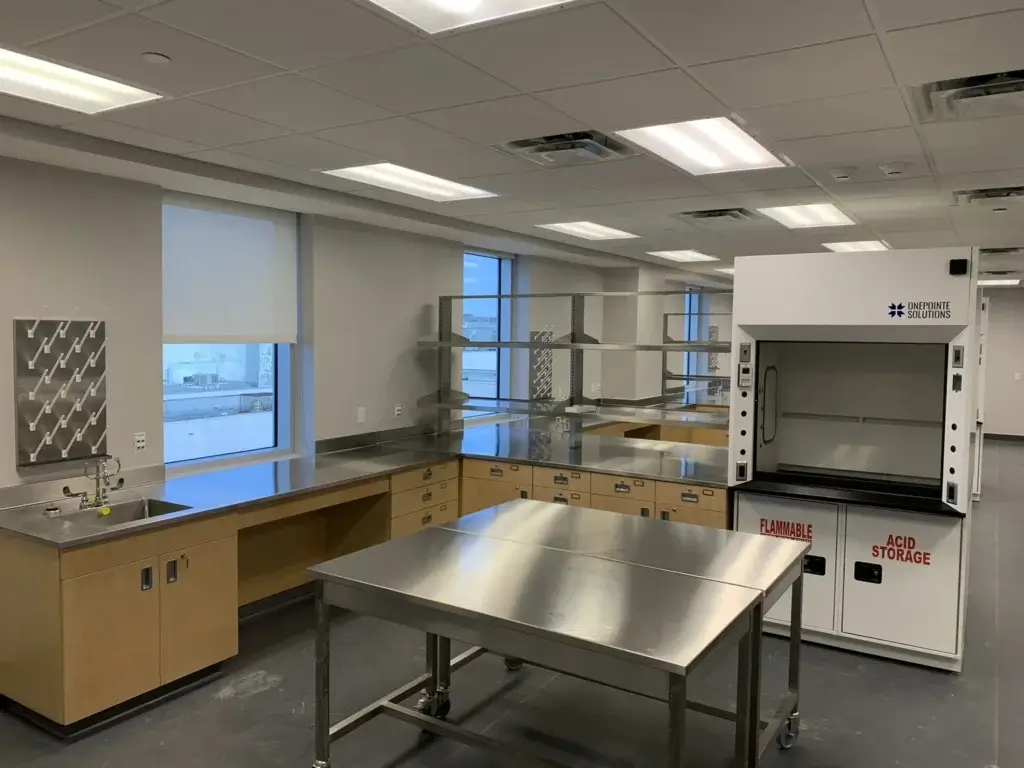
There are many kinds of lab tables but to name a few there are microscope tables, anti-vibration, balance tables, modular or portable lab tables mass spec benches, stainless steel tables and even custom.
Your laboratory environment will determine the type of table that you will need.
Need help? Check out our lab tables or give us a call to see what’s possible.
Q: What is the Weight Capacity of Lab Tables?
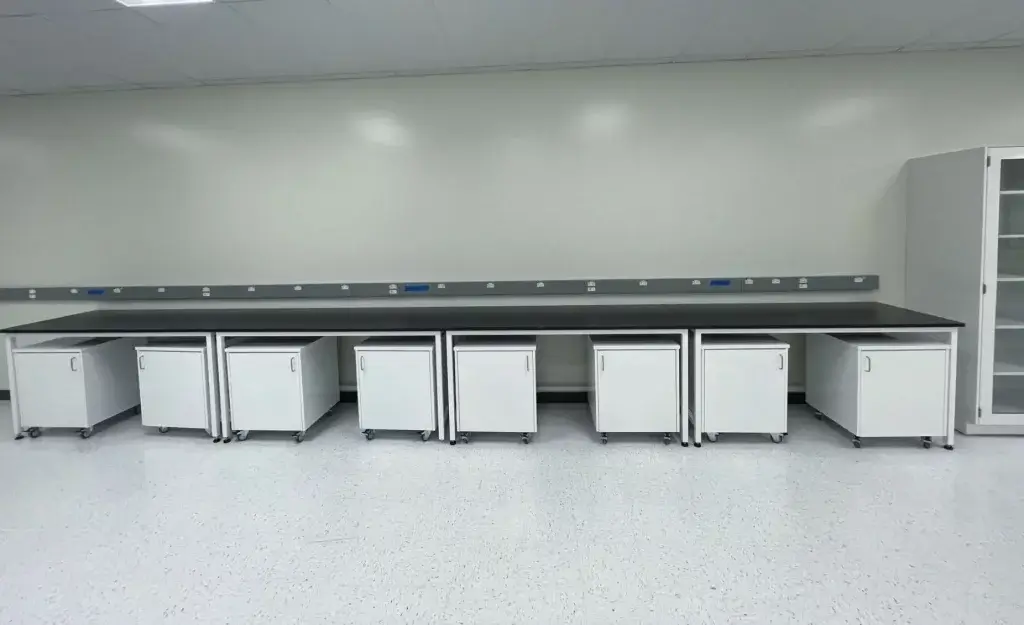
The weight capacity of a lab table will be determined by the foot options capacity.
For example, if there are chrome levelers on a table that hold 300lbs each and there are four legs on the table, then the weight capacity of the table would be 1,200lbs.
To learn more about lab table weight capacitates- check out our lab table catalog to view our foot options – OnePointe Solutions Lab Table Catalog
Laboratory Countertops
Q: What are the Best Countertops for Science Labs?
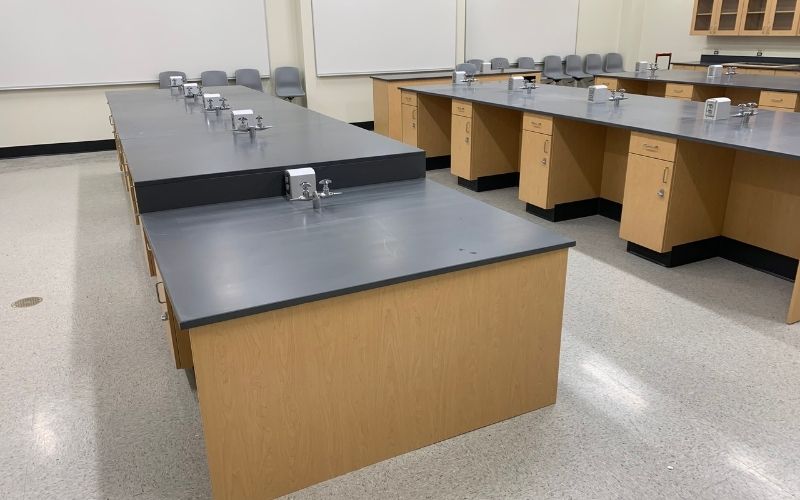
The best countertop is determined by the kind of lab you have. Below are traditional countertops you will find in labs:
- Epoxy Resin: Heavy chemical resistance, color-through, non-porous, most common, can be used in schools, heavy duty labs and industrial applications.
- Phenolic Resin: Scratch and moisture resistant, durable, non-porous, great for water treatment plants, hospitals, schools and a cost-effective option compared to epoxy.
- Stainless Steel: Corrosion resistant, anti-bacterial, best for sterile environments, clean rooms, biosafety labs, hospitals.
- Solicor-CR: Chemical resistant, non-porous, scratch & impact resistant, not as common in lab spaces.
Q: What is the Typical Thickness of a Laboratory Countertop?
This will vary based on the material as different laboratory countertops and worksurface materials have different thicknesses but below are typical thicknesses for the most common laboratory countertops:
- Epoxy Resin: 0.75″, 1.0″, 1.25″
- Phenolic Resin: 0.75″, 1.0″
- Stainless Steel: 1.0″, 1.25″
- Solicor-CR: 0.75″, 1.0″
Q: What is the Width of Standard Lab Countertop?
Widths of lab countertops are always going to vary with what is needed in the lab and the material type as different countertops may have different size limitations. It is also best to measure what is needed for accuracy. But generally speaking, 24″, 30″, or 36″ in depth is a sweet spot for lab countertops.
Q: What Kind of Countertops Do You Need to Have in a Microbiology Lab?
In a microbiology lab you can have epoxy resin, phenolic resin, stainless steel or solicor-CR countertops. However, the needs of the lab will determine what countertop will be best. Like if you working with heavy chemicals, then epoxy resin will be your go-to option. Or if going to have lots of liquid materials and wory
Q: Chemical Resistant Countertops for Laboratory in White Color?
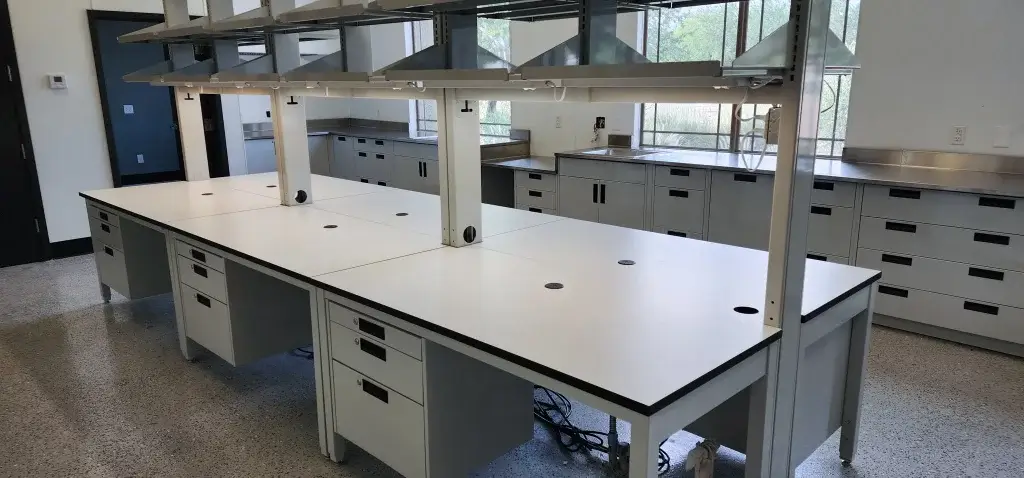
There are two chemical resistant countertops that come in color white:
- Epoxy Resin – Alpine White (color-through)
- Phenolic Resin – Glacier White (non-color-through)
Q: What are the Black Countertops in Science Labs called?
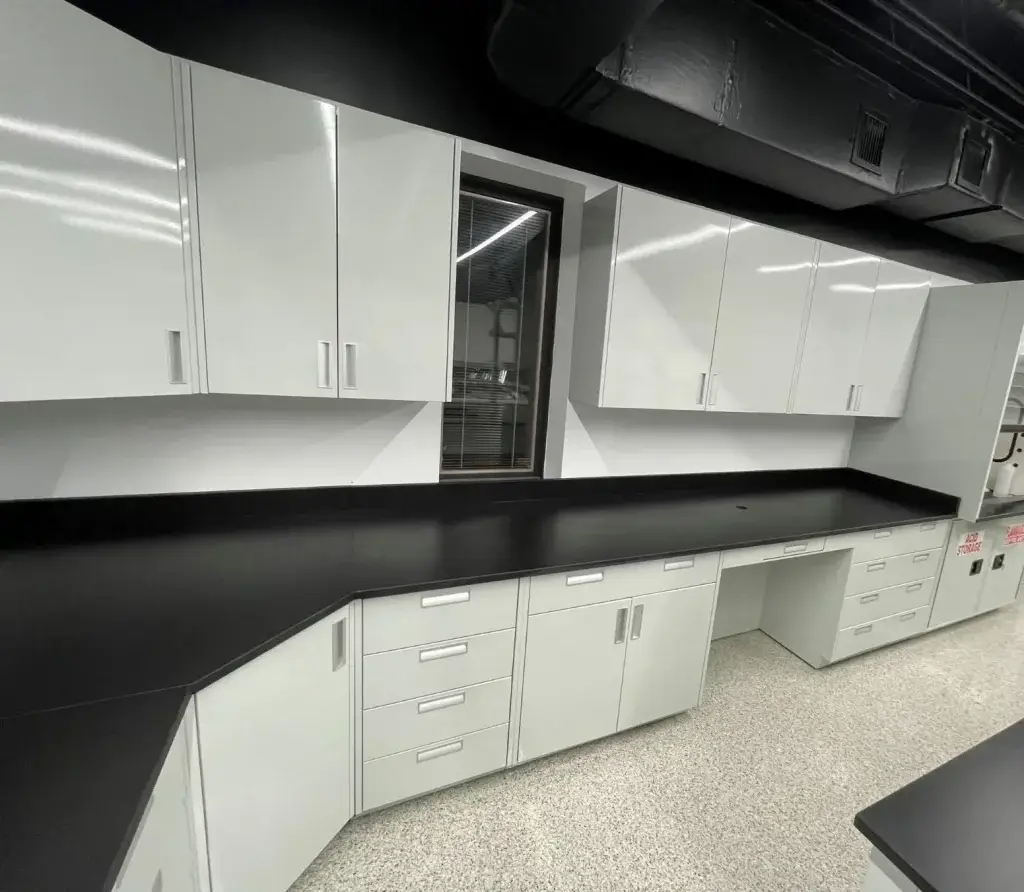
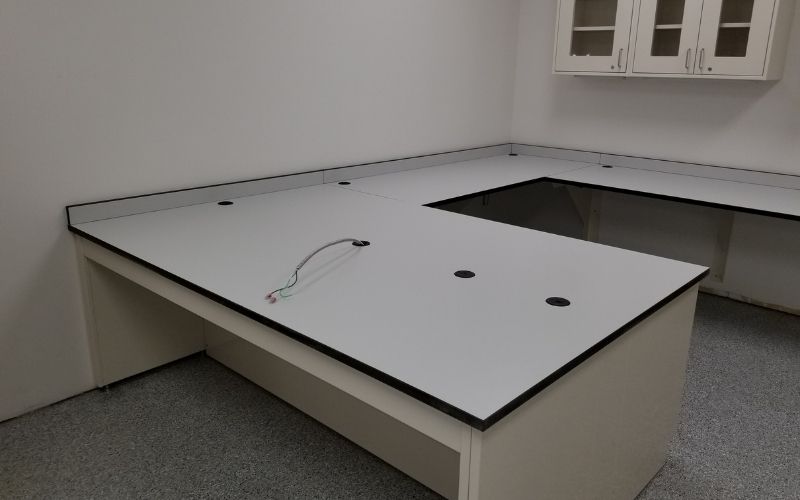
The black tops in science labs will either be epoxy resin, (most common), smooth to the touch, color-through material or phenolic resin which has a more texture surface which contributes to its scratch resistant capabilities. Regardless of what you choose, both options offer great chemical & and moisture resistance.
Below are some key differences to keep in mind with choosing which countertop is right for your laboratory:
Epoxy Resin
- Heavier to Install
- Costlier than Phenolic Resins
- Scratches Easily
- Not Suitable for In-Field Fabrication
- Color Matching Sinks Available
Phenolic Resin
- Ease of Install, Light Weight
- More Cost Effective to Epoxy Resin
- Suitable for In-Field Fabrication
- Black Core (middle) Regardless of Color Chosen (view image to the left to see example)
- Sinks Unavailable in Material
For more information about the difference between epoxy resin and phenolic resin lab countertops, check out our blog:


